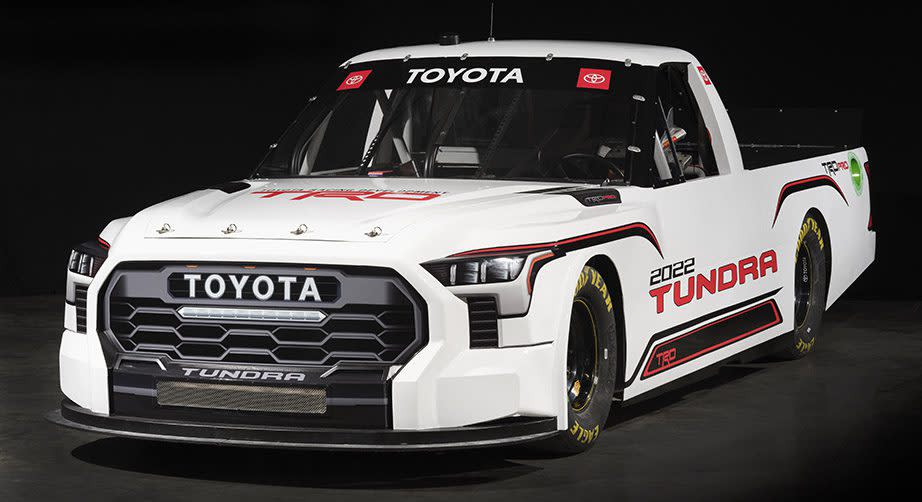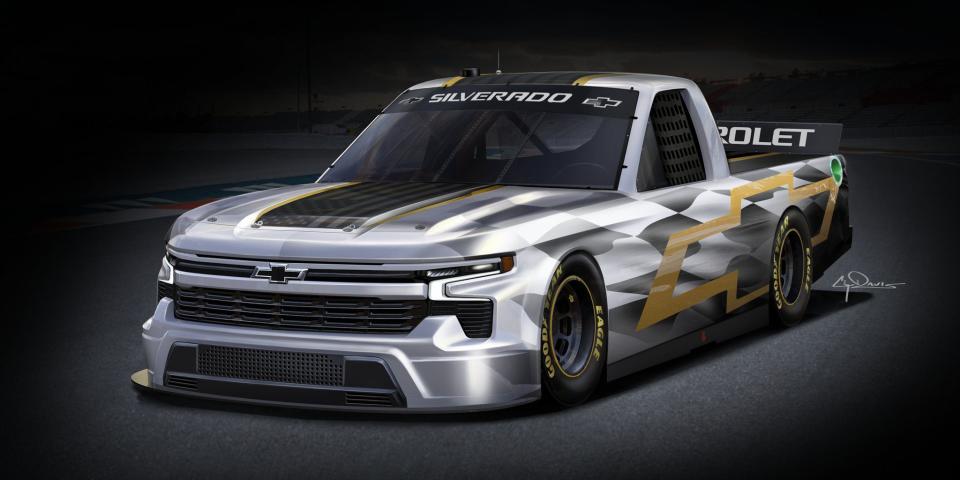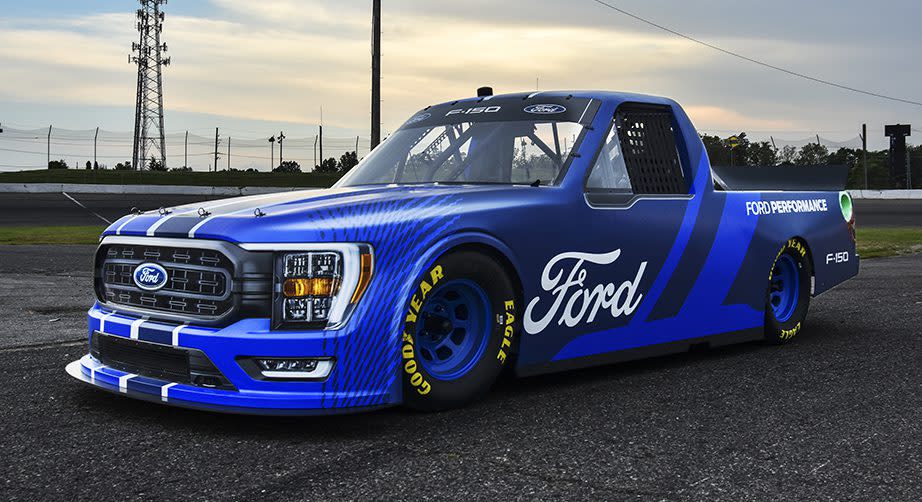Manufacturer-specific body updates unveiled for 2022 Camping World Truck Series season
NASCAR has announced new truck body updates beginning with the 2022 NASCAR Camping World Truck Series season.
The sanctioning body will permit Chevrolet, Ford and Toyota to update their truck noses and tails to better match production trucks for consumers, while adding more identity from the front fascia (nose of the truck) to the A-post.
RELATED: Camping World Truck Series schedule | Playoff standings
Previously, the lower fascia was common on all three truck models. Now, it has been opened for the manufacturers to better replicate the looks of the Silverado, F-150 and Tundra.
Ford unveiled its 2022 F-150 model via social media on Thursday with current Truck Series driver Hailie Deegan. Toyota revealed the new-look Tundra TRD Pro on Friday with NASCAR Cup Series champion and Truck Series owner Kyle Busch. Chevrolet unveiled its new Silverado in a social media post at the end of October.

The enhanced manufacturer identity will allow for the trucks on the race track to closely resemble those driven by fans off the car-dealership lot. While the body style is set to change, the thrilling on-track performance product fans are used to seeing will not be impacted and the same high-quality racing is anticipated for next season and beyond.
“We‘re always looking for ways to be more relevant for our OEMs,” John Probst, NASCAR‘s senior vice president of innovation and racing development, told NASCAR.com. “One of the ways to do that is to have the products on the race track more accurately reflect what‘s available in the showroom. I think you‘ll see a lot more characteristics of the production trucks in the trucks that you see on track in 2022.”
The submission process for all three manufacturers initially began in September 2020 and followed the OEM Body Approval Process outlined in the NASCAR Rule Book. All three OEMs passed wind-tunnel testing on their first attempt, which prompted final approval from NASCAR officials.

Like the current body, next year‘s truck versions will include a mixture of materials. The nose and tail affected by the updates will now be made of a strong composite material compared to the current nose and tail. The remainder of the body will consist of sheet metal.
While NASCAR would like all Truck Series teams to compete with the new body in 2022, the current body will also be approved for competition in 2022 to assist teams in the management of costs.
The manufacturers were able to add their own creativity to the new body updates, which Probst said is likely the biggest change that was made with the new process of determining the final product.
“We had opened up a lot more areas for the OEMs to basically implement their DNA into the race truck,” Probst said. “As part of that, though, we wanted to make sure that from a performance perspective, we keep parity on the race track. If you look at the Truck Series now, that‘s some of the best racing we have going on. First and foremost, we didn‘t want to hurt that, so we actually used the performance of the current truck for the new truck with additional character to them. While they have a lot more character from our process, from a performance perspective, the parity will still be really good in the Truck Series.”

That manufacturer ingenuity during the process has made for a more stylish on-track product for the fans‘ enjoyment.
“They look really good with all that additional styling on the fenders and the hood and in the lower nose,” Probst said. “It‘s even striking again when you see them all painted up with the decals on them and the paint schemes they implement. There‘s a lot of thought that went behind them. I think the fans are going to be over the moon with how these trucks look.”
Probst indicated that before conversations about the body updates, two of the three manufacturers were contemplating changes to their trucks under the current format. The production of the Next Gen for the NASCAR Cup Series facilitated deeper conversations for changes to the trucks.
“We said why don‘t we just take this opportunity to take some of the lessons that we learned on the Next Gen to open a lot more of the truck to OEM characteristics and that‘s where we landed,” Probst said. “We got all three (manufacturers) on board. They were excited to go ahead and do that and take advantage of the opportunity to bring even more of the production truck to the race track.”

